It seems we can’t find what you’re looking for. Perhaps searching can help.
Sign Up for newsletter!
Subscribe to get the latest eBook!
Hotline






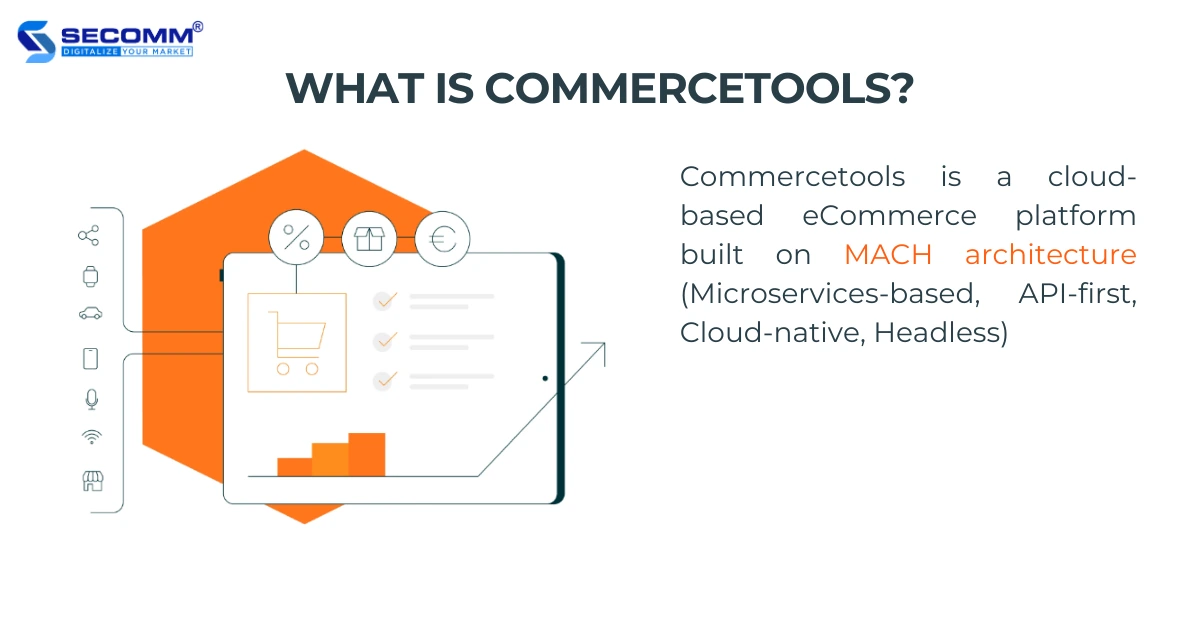
Selecting the right platform to build an eCommerce website is always the first and foremost step in entering the billion-dollar market of online business.
According to Builtwith, there are more than 200 eCommerce platforms for building websites, with popular ones like Magento, WooCommerce, Shopify, and Wix leading the pack. Among them, there is one platform that many enterprise-level businesses favor, and that is Commercetools.
Since September 2021, Commercetools has raised a total of $308.1 million through six rounds of funding. In 2022, the platform achieved a net revenue milestone of $39.1 million, demonstrating its growth potential in the eCommerce industry.
This is a cloud-based eCommerce platform built on MACH architecture (Microservices-based, API-first, Cloud-native, Headless), allowing you to tailor your eCommerce experience to fit the exact needs of your business and customers.
Beyond this, Commercetools is the creator of Headless Commerce solution, which enables you to customize and intercharge the backend and frontend without affecting each other.
Due to years of investment in eCommerce technology, it has been recognized as a ‘Leading platform’ by reputable consulting firms such as Gartner Magic Quadrant, Forrester B2C Commerce Solutions Wave™, and IDC MarketScape: Headless Digital Commerce.
Some well-known brands that are using the platform include Audi, BMW, Volkswagen, Qantas, and more
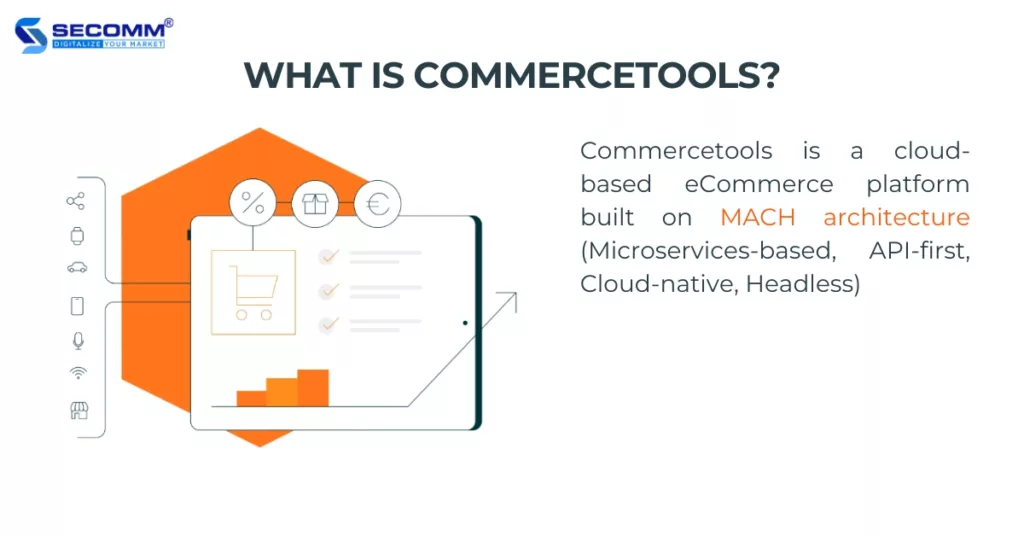
Microservices-based is a software development architecture where applications are divided into smaller and independent components. In an eCommerce system, each microservice takes responsibility for a specific function and can undergo independent development, deployment, and management, separate from other microservices.
The Microservices-based architecture enhances flexibility and scalability, enabling developers and admins to easily maintain and update system components without affecting other parts.
This approach allows Commercetools to deploy frontend and backend components independently, resulting in faster, more reliable, and responsive performance compared to traditional approaches.
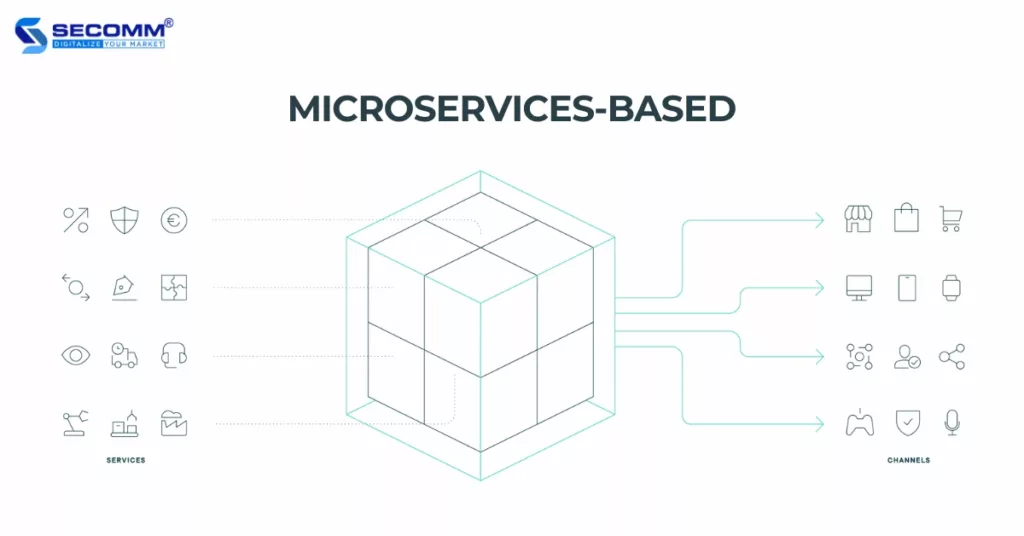
API-first is a software design approach that focuses on building Application Programming Interfaces (APIs) before developing an eCommerce system. Instead of developing the system first and then building corresponding APIs, API-first requires developers to define the necessary APIs upfront and then use these APIs to develop the entire eCommerce system.
This approach enhances system flexibility and scalability, reduces development time and ensures the compatibility and interaction between various functionalities.
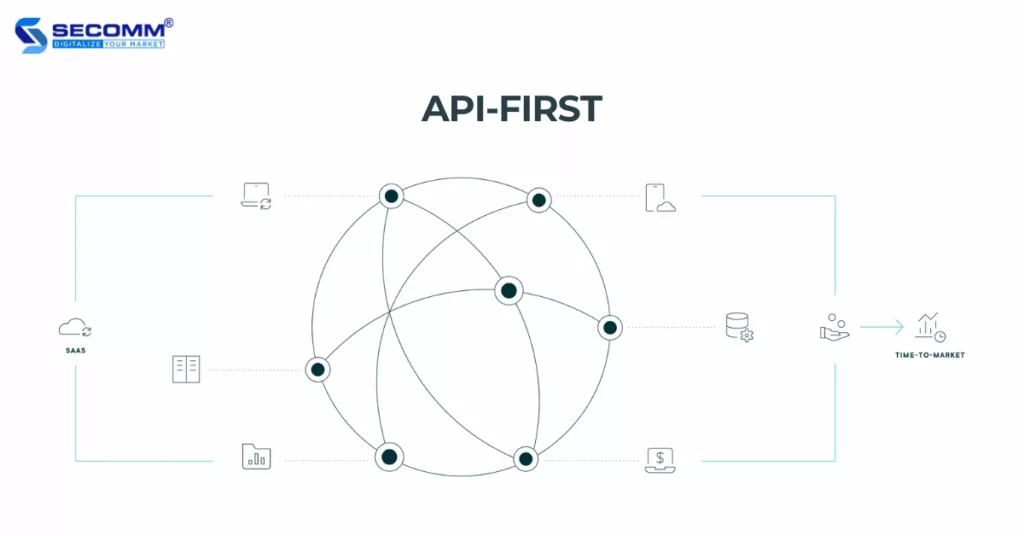
Currently, Commercetools provides over 300 separate APIs that you can use to build your eCommerce website.
Cloud-native is a development and deployment architecture designed to leverage the cloud features such as flexibility, availability, security, and automation.
This architecture typically involves using distributed applications, microservices, automation and integrating extensions to achieve high readiness and scalability.
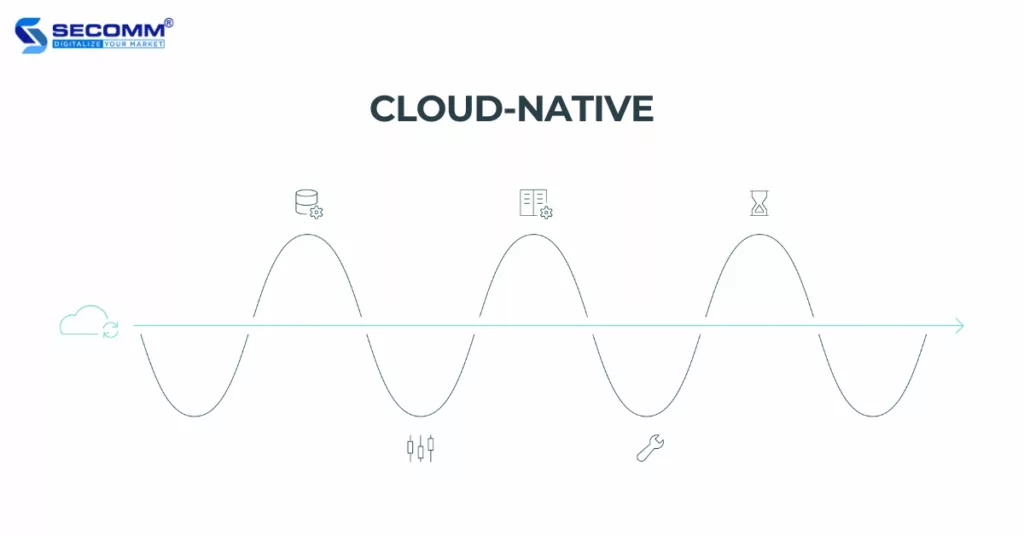
Commercetools leverage a cloud-native approach hosted on Google Cloud and Amazon Web Services (AWS), both well-known brands are widely used in certified data centers across Europe, the US, and APAC (Asia-Pacific).
Headless Commerce is an architecture where the user interface (UI) and the backend are decoupled and operate independently. In headless architecture, the UI is designed solely to focus on displaying content and interacting with users, while the backend is responsible for handling business logic, data storage, and providing APIs to interact with other applications.
The architecture provides high flexibility and scalability, allowing developers and admins to focus on a specific part of the system without having to change the entire architecture. It also enhances the application diversity and compatibility, as different UI software can be used to display content for users.
As a pioneer in Headless Commerce technology, Commercetools offers an open and decoupled environment that enables unlimited customization across all eCommerce channels.
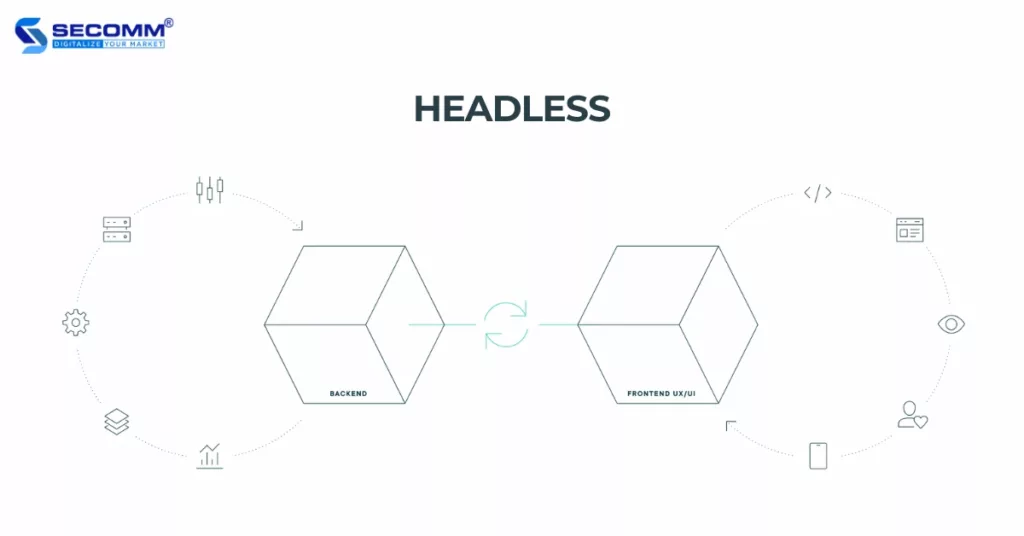
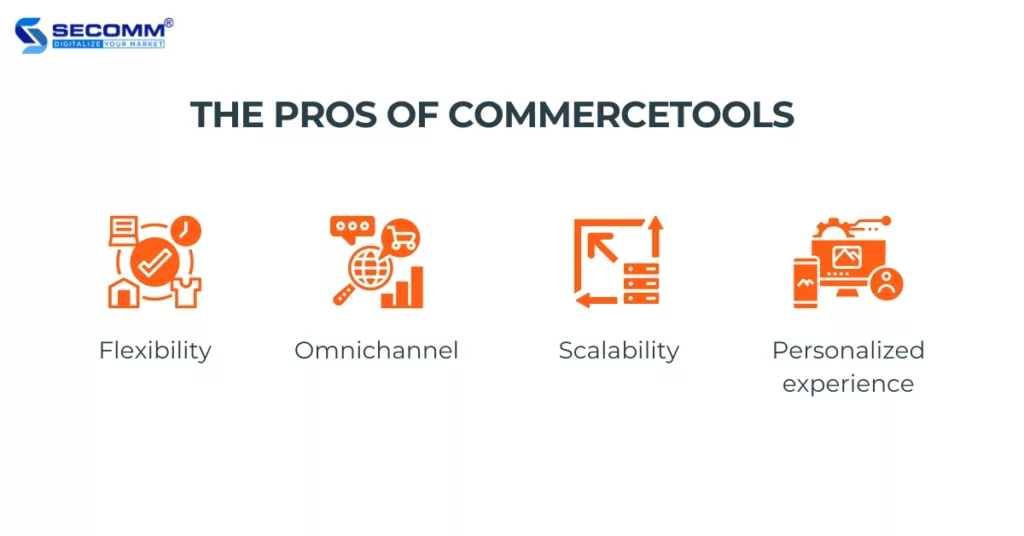
Commercetools has its ability to be flexible with the API architecture, making it compatible with any system and app. This allows you to easily integrate and expand your eCommerce system according to your specific needs.
Commercetools supports Omnichannel including eCommerce websites, mobile apps, eCommerce marketplaces, social platforms, brick-and-mortar stores and more. This enables you to reach customers across multiple channels, boosting your conversion rates and revenue.
Because Commercetools is built on MACH architecture, it has an ability to flexibly scale by adding or removing distinct functions as needed. This facilitates easy adaptation to the ever-changing market trends.
Commercetools provides you with a personalization feature to improve your customer experience. This way, you can segment your customers based on their behaviors and preference, then offer them personalized promotions or product recommendations.
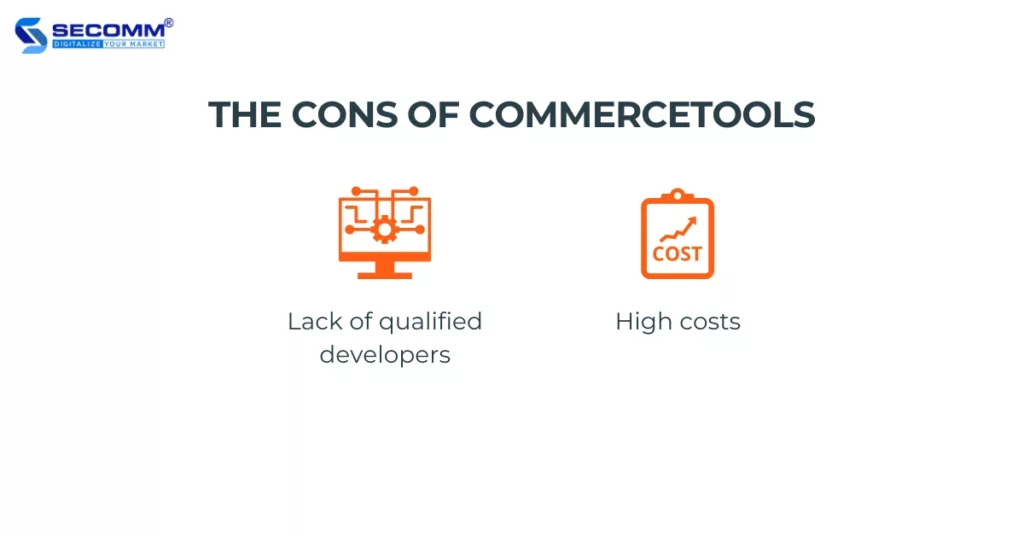
Commercetools is a highly customizable eCommerce platform, which requires a team of technical-skilled developers to deploy and maintain the eCommerce system.
Moreover, Commercetools is a relatively new platform compared to other popular ones like Shopify, Magento, WooCommerce, and more, so there may be fewer experienced agencies and developers available for you to choose from.
The cost of using Commercetools is quite high and will depend on your business’s total revenue, along with the development cost and the cost of integrating third-party plugins or apps.
If your business has a maximum annual revenue of around 100,000,000 USD, you would have to pay approximately 120,000 USD as an annual licensing fee for using Commercetools.
Commercetools is a platform that extensively applies advanced technologies to help businesses build highly complex eCommerce websites. However, it is primarily suitable for enterprise-level businesses, with substantial budgets to implement their specialized systems.
Related article: Top 10 eCommerce Websites Using Commercetools Platform
With years of experience implementing eCommerce solutions for various businesses around the world such as Changi Airport Group (Singapore), Laybyland (Australia), Vinamilk (Vietnam), Jasnor (Australia), My Market (Hong Kong), and more. SECOMM understands the potential of Commercetools for improving business operations, as well as the impediment involved in the development process.
Contact or call directly our hotline (+842871089908) to the SECOMM hotline for a free consultation.
 2
2
 11,131
11,131
 0
0
 1
1Subscribe to get the latest eBook!
Hotline